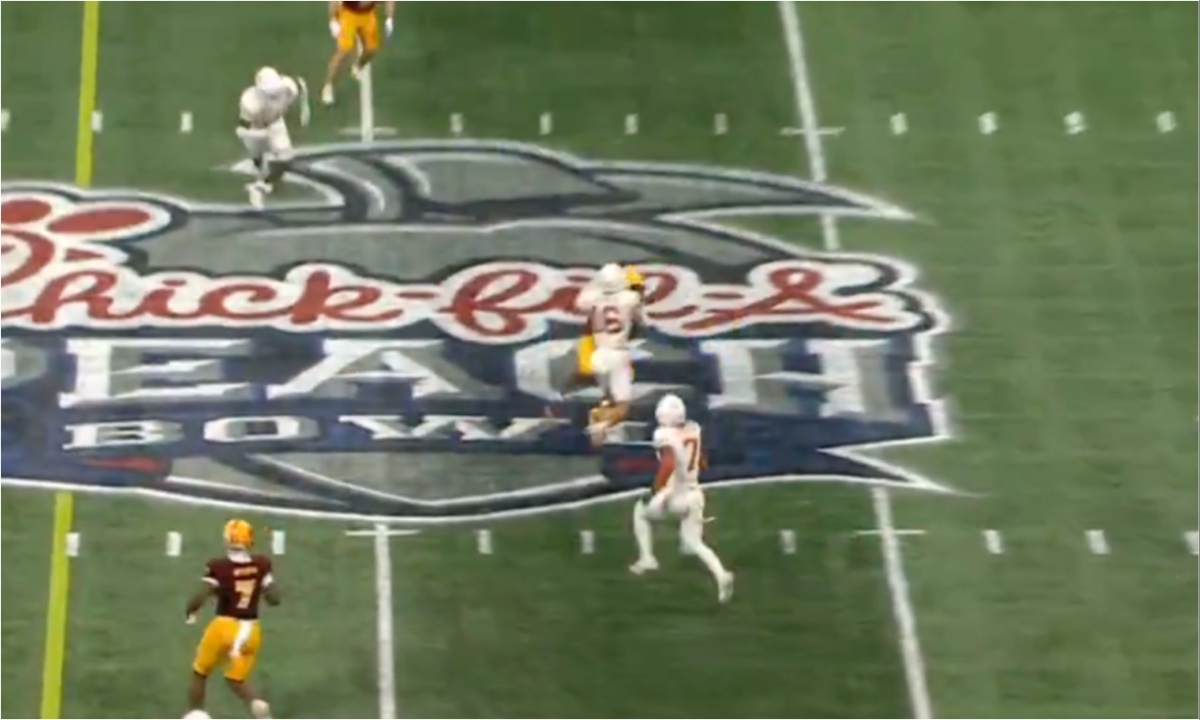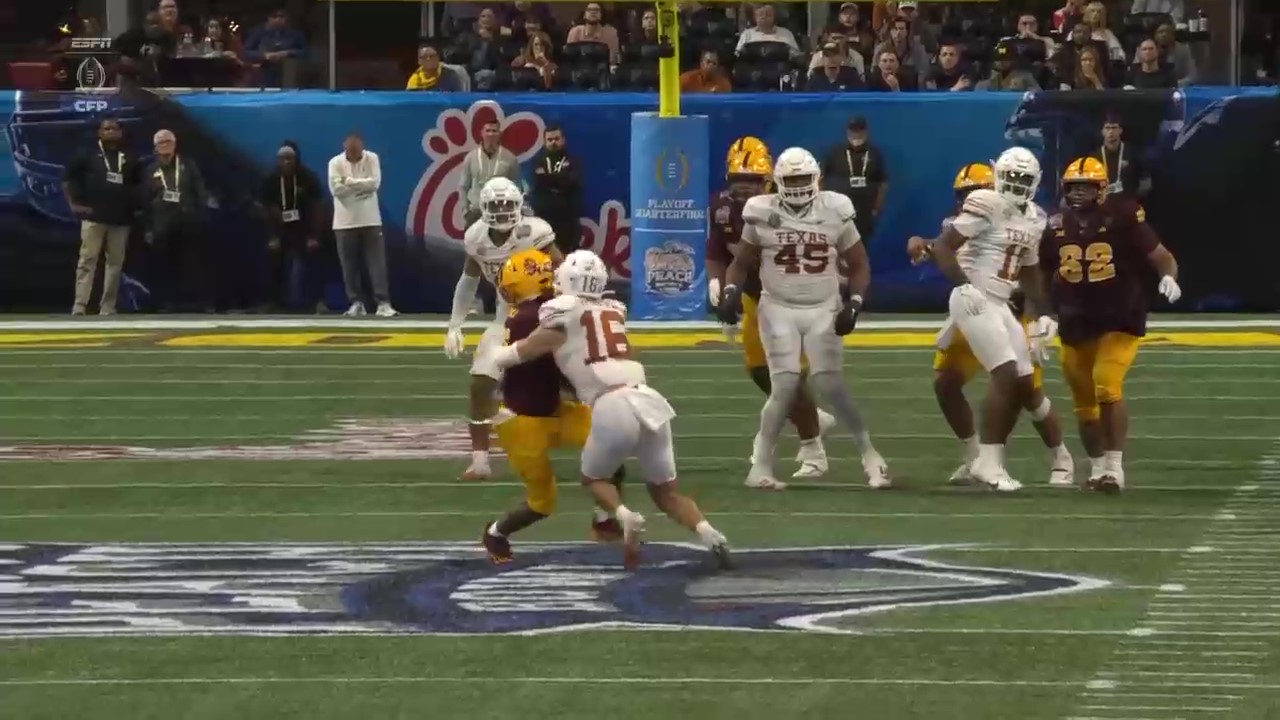The College Football Playoff quarterfinal between Texas and Arizona State featured a controversial moment in the final minutes of the fourth quarter. With the game tied at 24-24 and just over a minute remaining, Arizona State quarterback Sam Leavitt threw a short pass to wide receiver Melquan Stovall. As Stovall caught the ball and was tackled, Texas defender Michael Taaffe delivered a hard hit that involved helmet-to-helmet contact. Despite a review by officials, no targeting penalty was called, which stirred significant debate.
The lack of a targeting call was further scrutinized when ESPN’s rules expert, Matt Austin, examined the play. Austin noted that Stovall, a defenseless receiver, was hit in the head just as he was turning to make the catch. He expressed surprise that the officials didn’t call targeting, suggesting that the play could have warranted such a penalty from the booth. Despite this, the officials did not flag the play, and Arizona State was forced to punt on the ensuing fourth down.

In the final moments of the game, Texas had an opportunity to win with a field goal, but the attempt was missed. Arizona State’s chances were also dwindling, and the game went into double overtime. Texas ultimately won 39-31 in the overtime period, but the non-call on targeting remained a hot topic of conversation in the aftermath.
Social media erupted in disbelief and frustration after the play, with many commentators and analysts expressing outrage over the lack of a targeting penalty. Football analyst Warren Sharp and NFL RedZone’s Scott Hanson both criticized the officials for missing what seemed to be a clear targeting violation. Sports radio personality Mike Francesa went further, calling it “one of the most gutless, non-calls” he had ever seen, emphasizing how obvious the hit seemed to him.
After the game, Arizona State’s head coach, Kenny Dillingham, addressed the controversy by admitting his confusion over what constitutes targeting. He stated that he was unsure about the definition of targeting and preferred not to comment further until he had a better understanding. This response reflected the widespread confusion and dissatisfaction with how the play was handled by the officials.
